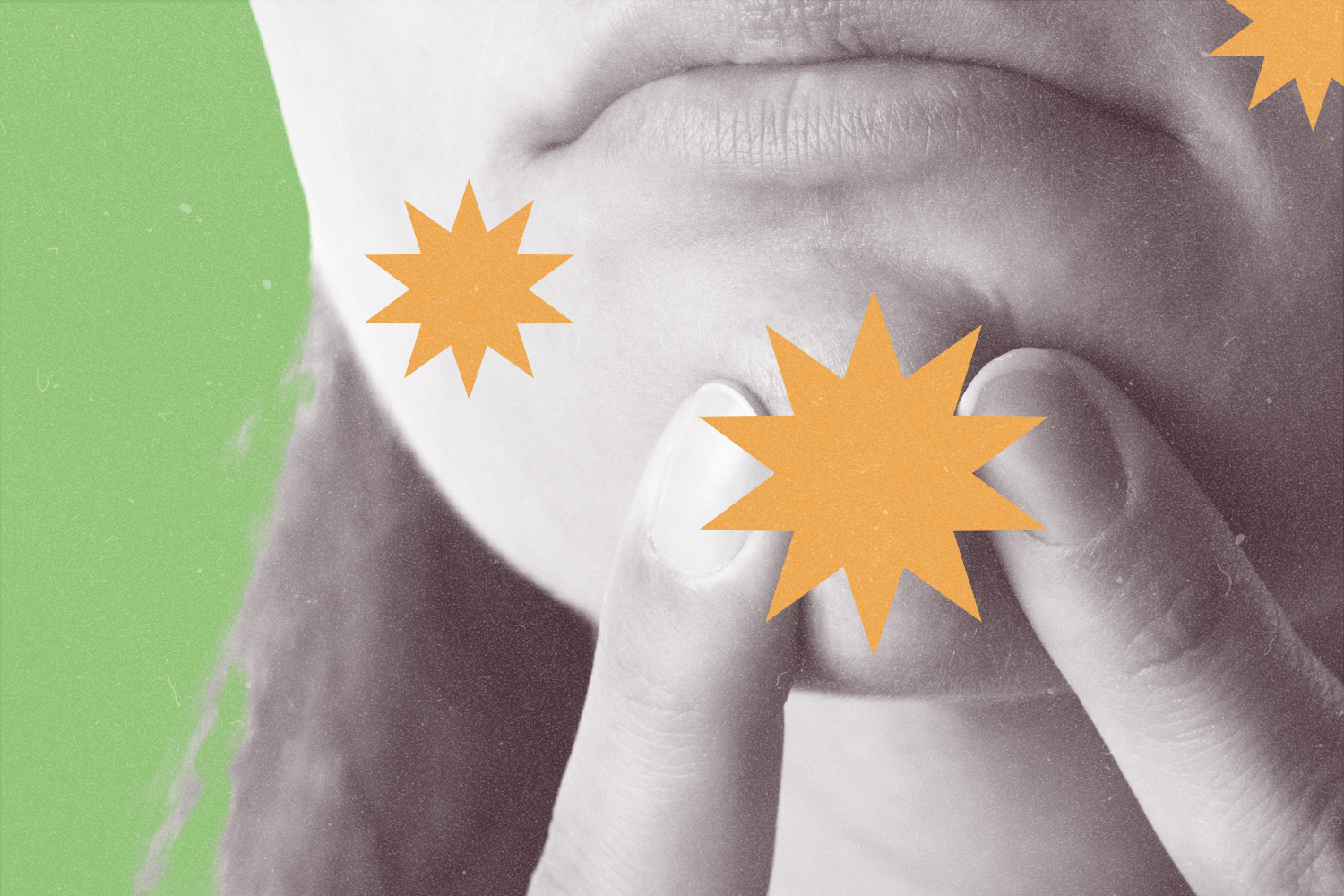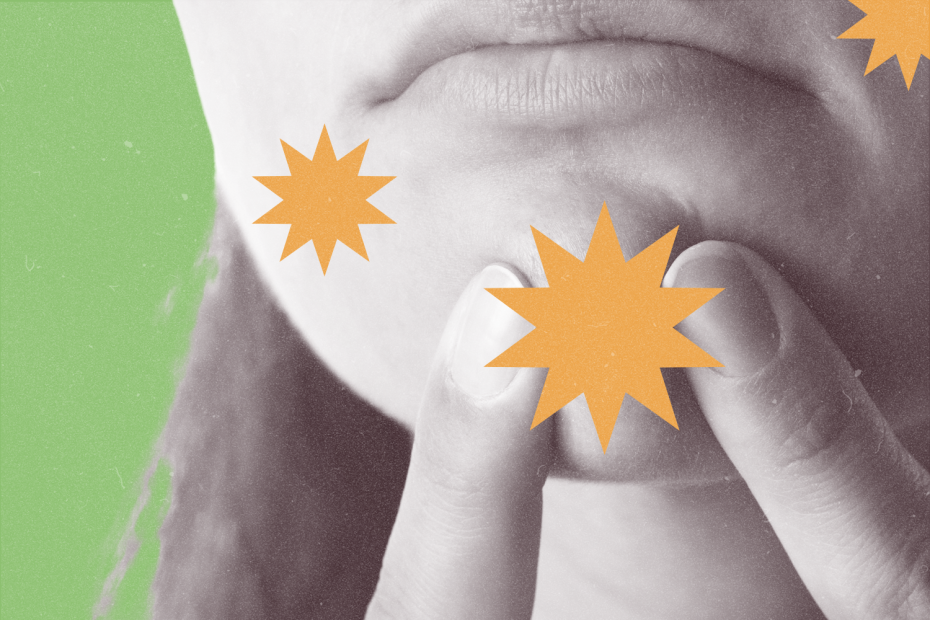
It’s hard to resist squeezing a juicy kernel. You probably want to get rid of it quickly and feel like you know exactly how to do it after having watched hundreds of videos online on how to pop pimples. Dermatologists give in to temptation, but they say you should leave pimples alone.
“As a general rule, you shouldn’t pop your pimples,” says Dr. Jody Alpert Levine, dermatologist and director of dermatology at Plastic Surgery & Dermatology in New York.
(time-brightcove not-tgx=”true”)
Pimples form when there is excess oil, bacteria and dirt. clog hair follicles. When trapped follicles remain under the skin and form a white bump, they are known as whiteheads. Blackheads are clogged follicles that reach the surface of the skin and open; Exposure to air turns its contents black.
Whatever the color, squeezing, popping, or picking at pimples to release pore-clogging dirt can disrupt the healing process and cause a host of problems, from scarring to infections, Levine says.
Still, he acknowledges that people get pimples from time to time. While it’s best to treat acne under the guidance of a dermatologist, Levine says he often teaches his patients the proper technique for removing blemishes.
Popping up painful, unsightly spots may not seem like a big deal. Dermatologists explain the risks, some tips for getting rid of pimples, and what to do if acne is a persistent problem.
The risks of popping a pimple
Squeezing pimples traumatizes the skin around them, says Dr. Paul Curtiss, a dermatologist at US Dermatology Partners in Carrollton, Texas. This can lead to long-term scarring, inflammation, infections, and more painful and noticeable acne, depending on the American Academy of Dermatology. He says it can also cause inflammatory hyperpigmentation or dark marks on the skin.
When you pop a pimple, you may inadvertently allow bacteria and debris to move deeper into your pores, making your acne worse. Oil and other dirt may also spread, causing more pimples to appear in other areas, says Dr. Annette LaCasse, a dermatologist in Commerce Township, Michigan.
Read more: Why walking is not enough when it comes to exercise
“Pushing toward the center of the pimple can often cause the pus under the skin to spread farther from the pimple, causing a larger pimple and more inflammation,” says Levine.
Additionally, bacteria or other germs from your hands can be transferred to the blemish, which could lead to an infection, the AAD says.
“I know people want to get rid of a pimple as soon as they see it, but they need to understand that immediate relief has consequences,” adds LaCasse.
The best way to get rid of pimples.
Covering blemishes with concealer can help hide them. But seeing a dermatologist is the safest way to remove pimples, says Levine.
Doctors can use sterile instruments to remove blackheads and whiteheads without scarring or inflammation, according to the AAD. They may also inject a corticosteroid into the bump, which helps it heal quickly and minimizes scarring. Another option is an incision and drainage procedure, in which the area is opened and debris is removed (think: all those doctor’s office videos about pimples).
As a homemade option, try pimple patches. These are small stickers that are applied to the pimples and contain hydrocolloid gel, a substance that heals wounds, according to the Cleveland Clinic. You can also apply products containing benzoyl peroxide, glycolic acid, or salicylic acid to the spots. Curtiss says these products often help pimples dry out and go away a little faster than they would on their own.
Read more: What experts really think about diet sodas
While dermatologists advise against removing blemishes themselves, they acknowledge that people are likely to do it. So knowing the proper technique can help you minimize problems, Levine says.
If you must pop a pimple, wash your hands and face first and then apply ice to reduce pain and inflammation. Wait until the lump forms a pimple, which means the pus is near the surface, he adds. “The correct way to pop a pimple involves gentle, even pressure around the pimple and light pressure outward. If gentle pressure of that nature doesn’t come out with pus, then stop trying.”
You can use the same technique to squeeze blackheads, adds Levine.
Why it is more effective to treat acne, not burst it
If you frequently get pimples that you want to pop, Curtiss suggests treating your acne problem in general. A dermatologist can help you create a plan.
Many people can treat acne at home with over-the-counter products. Using a face wash with benzoyl peroxide and applying the retinoid adapalene may help clear up acne, according to DAA. Products with salicylic acid can unclog pores and exfoliate skin, preventing acne, and azelaic acid can minimize acne-related dark spots.
If you have acne-prone skin, Levine suggests using non-comedogenic, oil-free skin care products that won’t clog pores.
Read more: 6 compliments that always come
See a dermatologist if you’ve tried home acne treatments without improvement for four to six weeks, he says.
Doctors will determine the cause of acne and prescribe the most appropriate treatments, which may include retinoids or topical and oral antibiotics. They may also recommend chemical peels or laser therapy.
“My goal for my patients is to always get and keep their skin 100% clear,” says Curtiss. “The best treatments are those that can prevent pimples from forming in the first place.”
